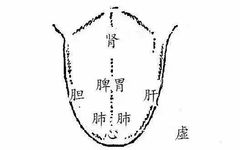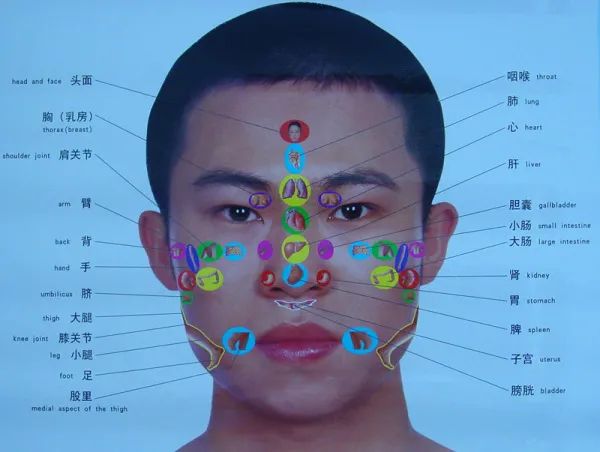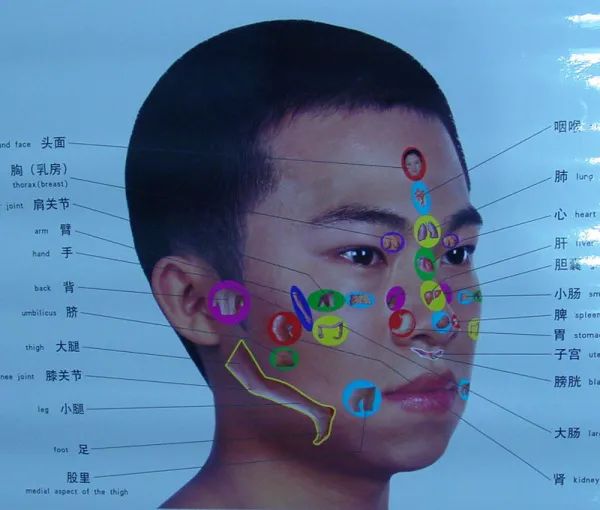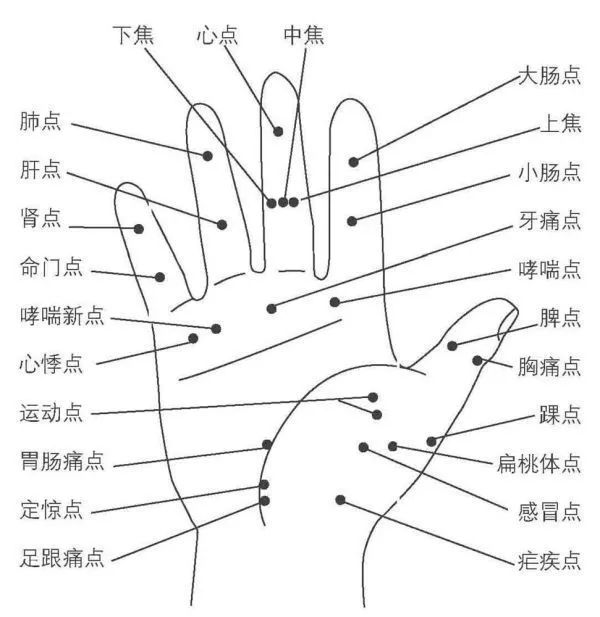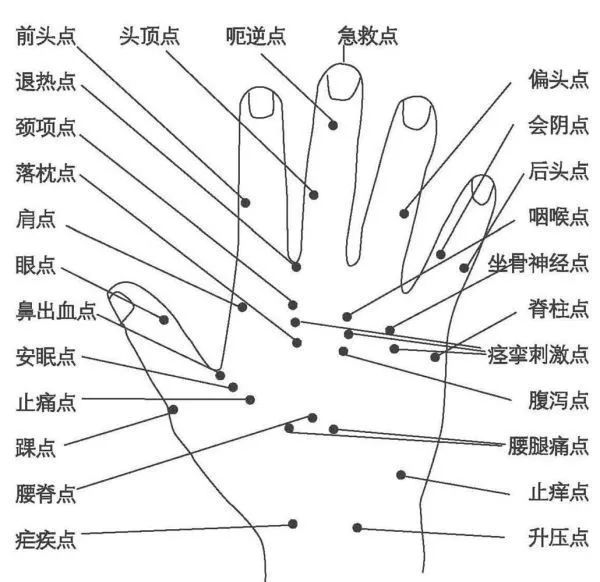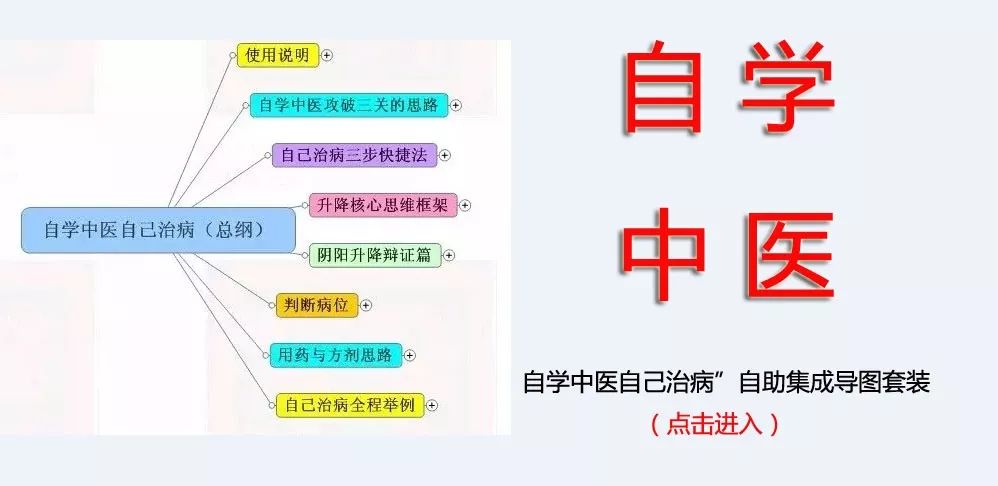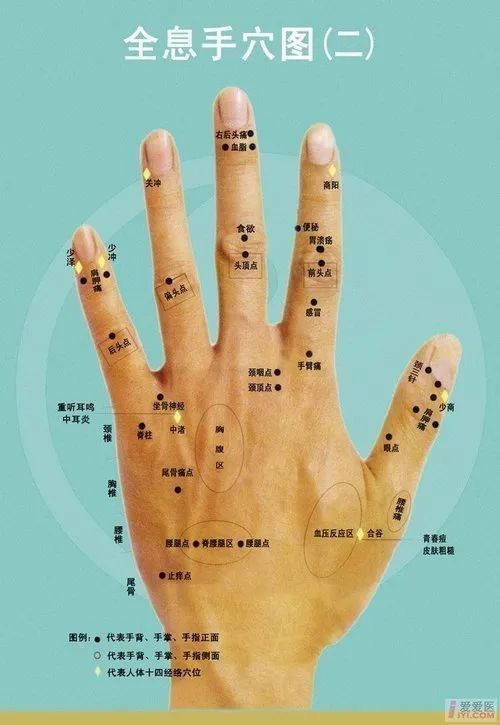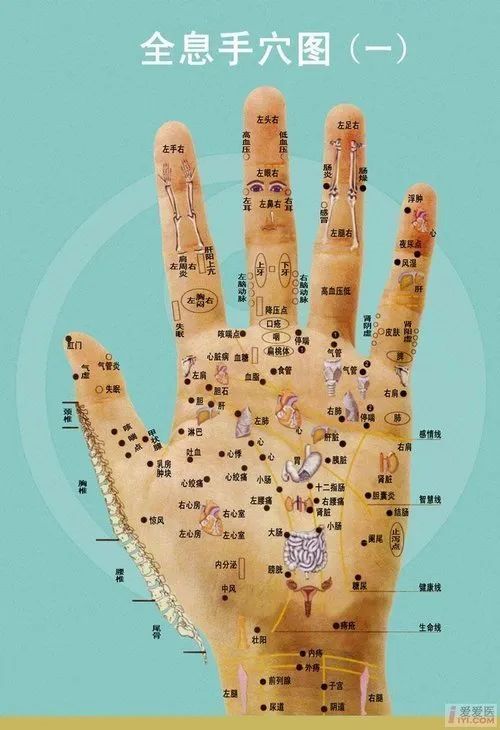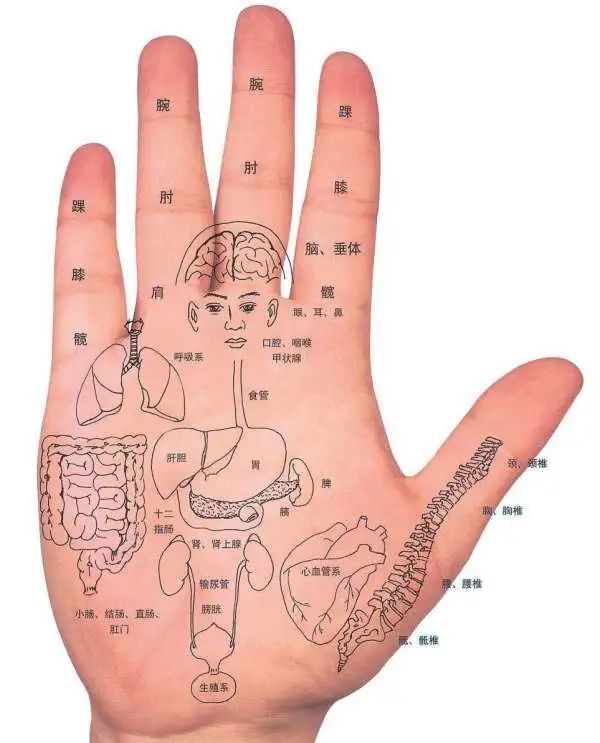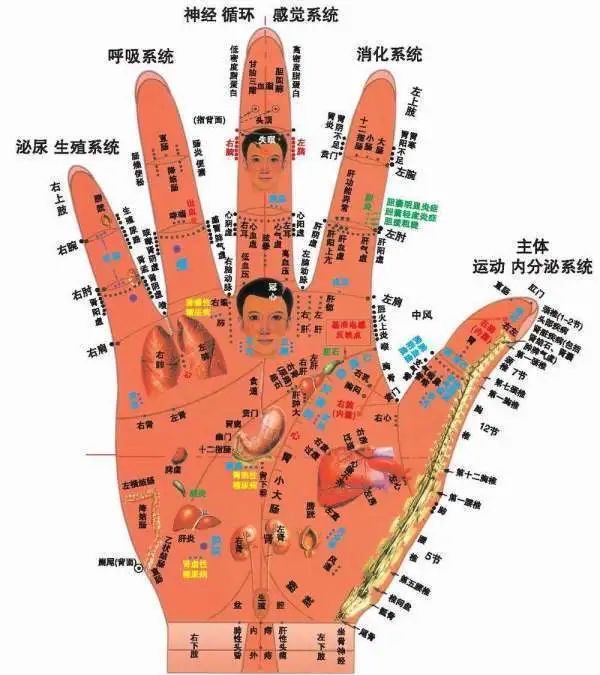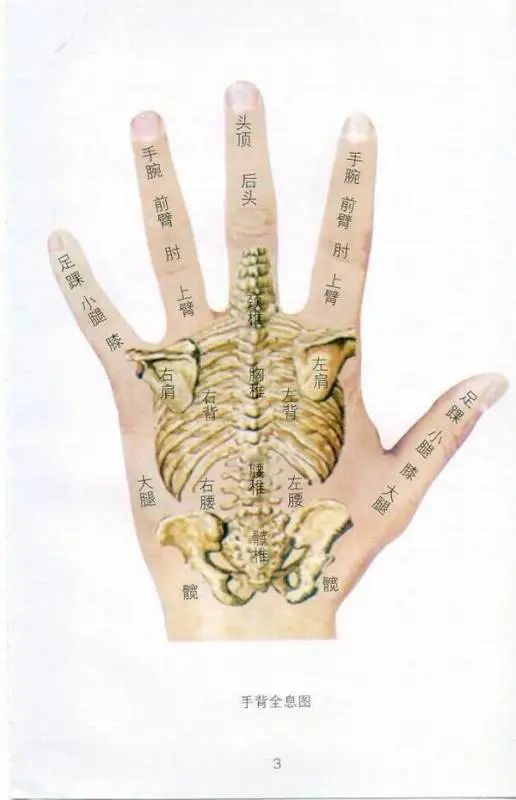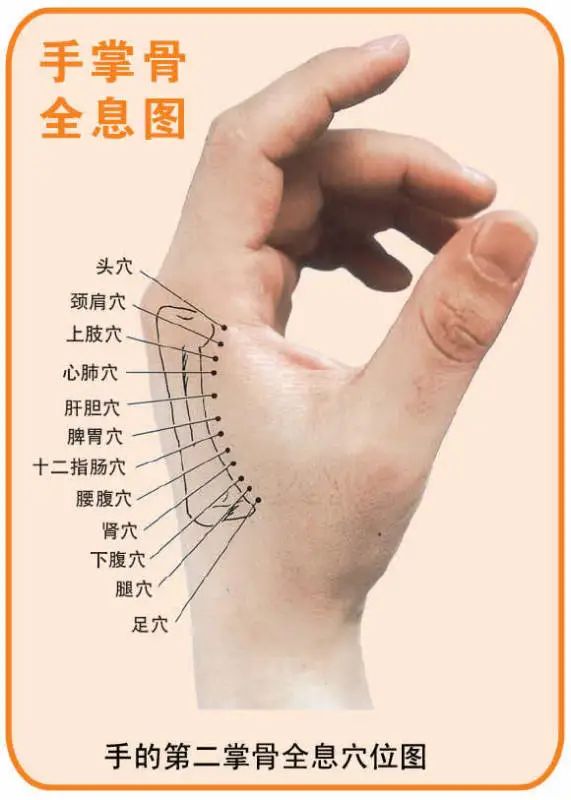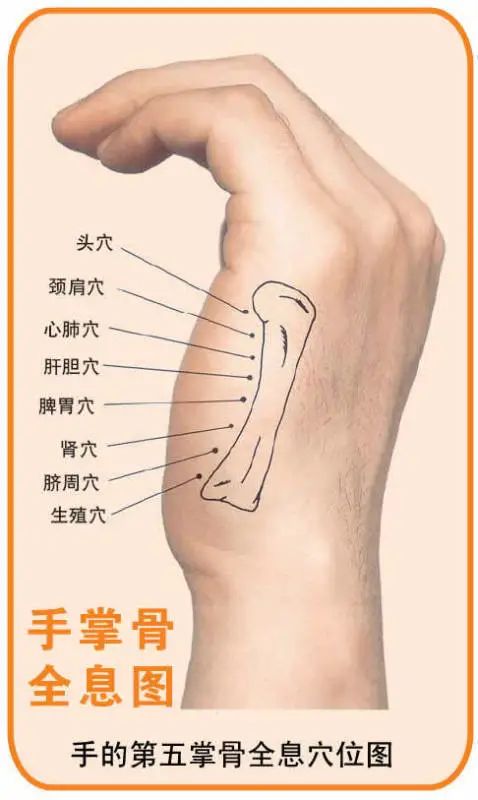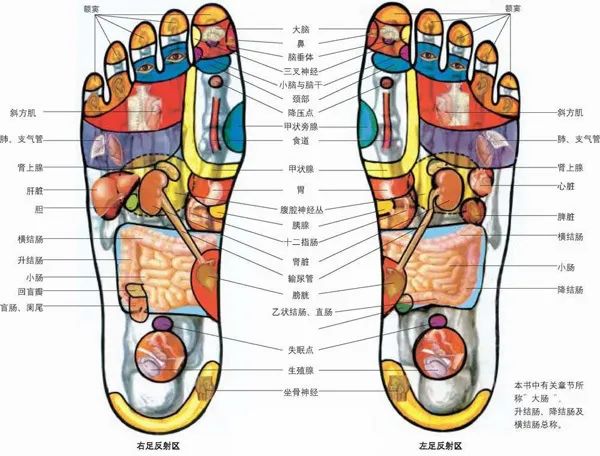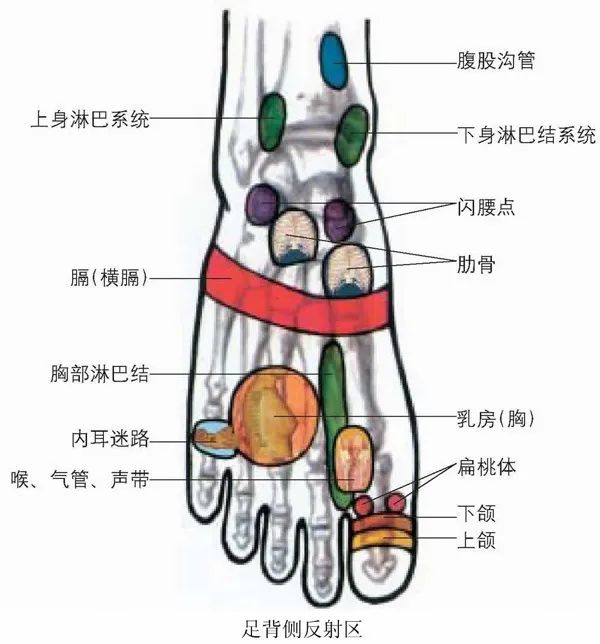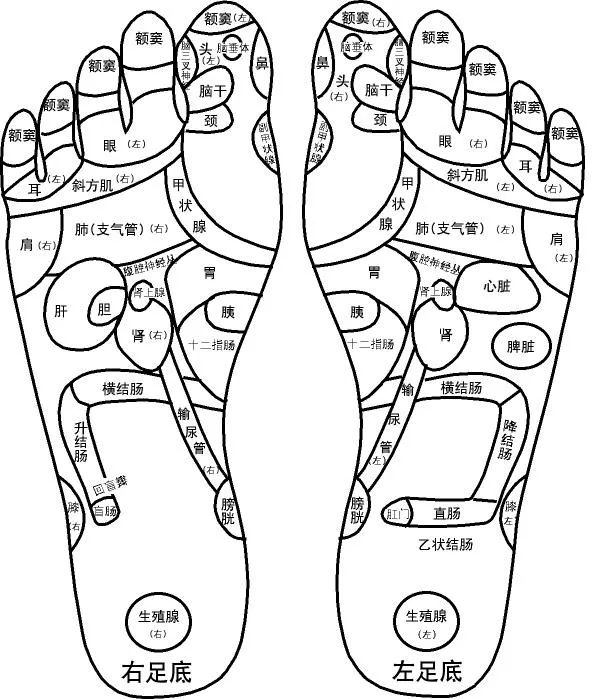For listeners who enjoy audiobooks, you can click below to listen to the audio.
1. Comprehensive Guide to Holographic Observation
1
Through facial color diagnosis
1. Yellow: Indicates potential issues with the spleen and stomach, and digestive system;
2. White: Indicates potential issues with the lungs and respiratory system;
3. Red: Indicates potential issues with the cardiovascular system;
4. Green: Indicates potential issues with the liver and gallbladder, and immune system;
5. Black: Indicates potential issues with the kidneys and bladder.
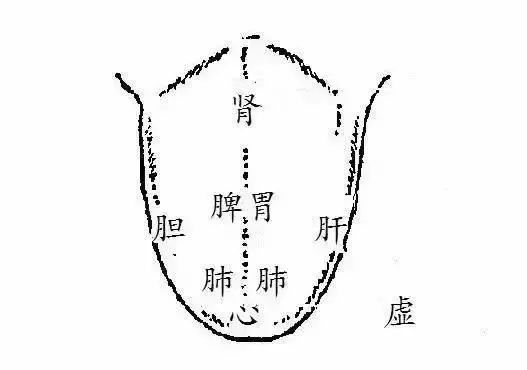
2
Through tongue observation for health diagnosis
The tongue of a healthy person is pink. If a person is unhealthy, it can be observed from the tongue.
1. A thick coating on the tongue indicates poor spleen and stomach function;
2. A bluish root of the tongue indicates kidney issues;
3. Indentations on the sides of the tongue indicate liver issues;
4. A pale tongue indicates heart issues, suggesting insufficient blood supply to the myocardium, poor blood circulation, and symptoms of anemia;
5. A dark purple tip of the tongue indicates excessive heart fire, and blood stasis;
6. Numerous small red spots on the tip of the tongue may indicate myocarditis;
7. A blunt tip of the tongue with a deep groove may indicate diabetes.

The facial diagnosis is primarily divided into eight major parts:
“Heart, Lung, Liver, Kidney, Spleen, Small Intestine, Large Intestine, Reproductive System”
3
Heart
Reflex area (1): On the forehead from 1/3 to the hairline (the hairline circle)
1. The appearance of acne here, or a color difference on the forehead, indicates significant physiological stress;
2. The presence of spots here indicates heart disease (e.g., myocardial insufficiency);
3. The presence of moles or birthmarks here indicates congenital heart function insufficiency;
Reflex area (2): At the bridge of the nose between the corners of the eyes
4. The appearance of horizontal lines or prominent horizontal lines here indicates arrhythmia or poor heart condition;
5. If deep horizontal lines appear, and there are also deep vertical lines (grooves) on the tongue, it may indicate severe heart disease;
6. People with heart issues often have red blood vessels on their faces, resembling many small insects crawling, indicating poor blood circulation.
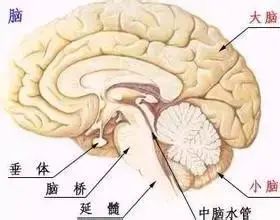
4
Brain
Reflex area: Between the two eyebrows
1. The appearance of deep vertical lines and redness in this area indicates insufficient blood supply to the cardiovascular system, headaches, nervous exhaustion, vivid dreams, poor sleep, palpitations, irritability, etc.;
2. If this area is red and shiny, it usually indicates high blood pressure.
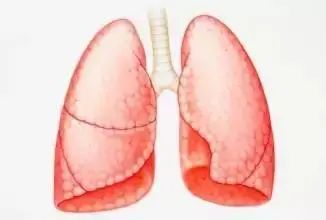
5
Lung
Reflex area: Between the two eyebrows and below the forehead 1/3, which is the position of the Yintang (印堂)
1. If the Yintang area is red, it indicates recent upper respiratory infections;
2. If the Yintang is dark, especially black, it may indicate pathological changes, and a hospital check-up is advised;
3. If the center of the forehead is significantly concave, and the color is dark, bluish, or spotted, it indicates lung disease and difficulty in breathing;
4. If there are acne spots, it indicates that the person has recently had a cold or sore throat;
5. If there are moles, birthmarks, or whiteness at the eyebrow area, it indicates pharyngitis, tonsillitis, or chest tightness, or lung disease;
6. A bulge above the eyebrows also indicates lung disease.
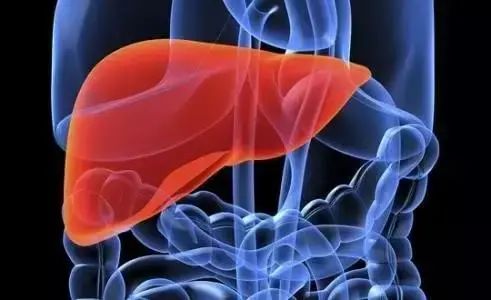
6
Liver
Reflex area: The triangular area from the center of the eyebrows to the tail of the eyebrows, and the middle section of the bridge of the nose is also the liver area
1. If these two areas are dark or spotted, it may indicate fatty liver;
2. If there are acne spots in these areas, it indicates excessive anger;
3. If there are spots at the temples, it indicates weakened liver function;
4. If there are spots in the middle section of the bridge of the nose, it may indicate excessive anger, emotional instability, or menopause;
5. If both areas have prominent spots and the complexion is dark and dull, indicating a person is very thin, it may indicate hepatitis or cirrhosis;
6. A mole in the center of the eyebrows, yellowing of the sclera, and a very yellow complexion indicate hepatitis B;
7. Soft, thin, dull nails with vertical lines that are brittle indicate poor liver function;
8. A face full of dark spots indicates congenital liver function insufficiency.
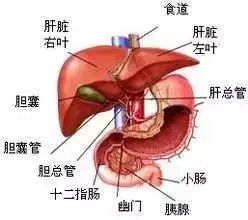
7
Gallbladder
Reflex area: On both sides of the middle section of the bridge of the nose
1. If there are red blood vessels, acne, or a bitter taste in the mouth upon waking, it indicates mild inflammation of the gallbladder;
2. If there are spots or shadows, it may indicate cholecystitis;
3. If there are vertical wrinkles in this area, or if there are vertical wrinkles when smiling, it indicates gallbladder issues;
4. If there are moles or birthmarks in this area, it indicates congenital gallbladder function insufficiency;
5. If you place your right hand under your right rib (the gallbladder is located here), and use your left fist to strike your right hand, if there is pain, it indicates cholecystitis;
6. If the pain is severe, it may indicate gallstones. People with gallbladder issues may be overweight;
7. A noticeable pair of spots or moles under the eyes indicates gallstones. Dark circles under the eyes also indicate poor gallbladder function.
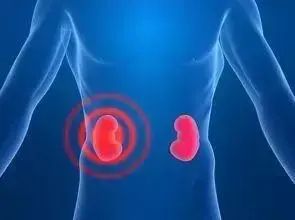
8
Kidney
Reflex area: The area where a vertical line from the outer corner of the eye intersects with a vertical line from the middle of the ear down to the chin
1. If there are bumps or dark spots in this area, it is not due to lack of cleanliness or sun exposure, indicating poor kidney function;
2. If there are red blood vessels, acne, or spots, it indicates kidney deficiency, usually accompanied by fatigue, and soreness in the lower back and legs;
3. If there are deep and large spots in this area, it may indicate kidney stones. If black moles or bumps appear on the ears, it may indicate kidney stones;
4. If there are moles or bumps in this area, it indicates congenital kidney function insufficiency, which may also cause soreness in the lower back, legs, and back;
5. Deep crow’s feet at the corners of the eyes and vertical wrinkles near the ears indicate declining kidney function;
6. The chin is the area associated with kidney soreness. If there are red spots or bumps in this area, it indicates lower back soreness, usually due to nephritis.
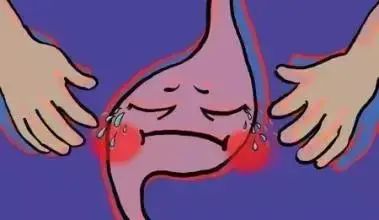
9
Spleen and Stomach
Spleen reflex area: At the tip of the nose;
Stomach reflex area: At the wings of the nose, with the depressions on both sides being the duodenum area
1. If the lips are pale, lacking redness, very dry, prone to cracking, it indicates poor spleen and stomach function;
2. A red tip of the nose, rosacea, red blood vessels, black spots, and bumps indicate poor spleen and stomach function;
3. A white tip of the nose, especially very white, indicates spleen deficiency and may lead to anemia. A yellow tip also indicates spleen deficiency, with symptoms such as excessive sweating, aversion to wind, fatigue, and lack of appetite;
4. If the nostrils are always dirty, dark, and oily, or have bumps, it indicates poor stomach function;
5. If the wings of the nose are red, it indicates stomach fire, leading to hunger and bad breath. Severe red blood vessels usually indicate gastritis;
6. If the wings of the nose are bluish-green, it indicates stomach cold, and when shaking hands, the fingertips feel cold, indicating abdominal pain and diarrhea due to wind-cold;
7. If there are spots or moles in the spleen area, it may indicate spleen enlargement, and if there are spots and moles in the stomach area, it may indicate ulcers and other pathological changes.
Abdominal pain before meals usually indicates gastritis.
Abdominal pain one to two hours after meals usually indicates gastric ulcers, with tenderness in the middle of the abdomen or slightly to the left.
Abdominal pain two to four hours after meals usually indicates duodenal ulcers, with pain near the center of the ribs, similar to a needle prick, and severe cases may cause pain to the back, with tenderness slightly to the right.
10
Small Intestine
Reflex area: Below the cheekbone, towards the inner side
If there are red blood vessels, acne, spots, moles, or birthmarks in this area, it indicates poor small intestine function, usually leading to loose stools.
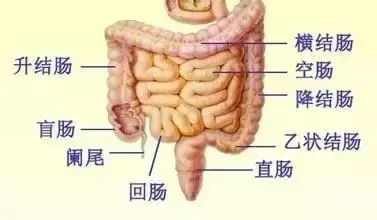
11
Large Intestine and Rectum
Large intestine reflex area: Below the cheekbone, towards the outer side, from the eyes to the outer corners of the eyes down to the corners of the mouth
1. If there are red blood vessels, acne, spots, moles, or birthmarks in this area, it indicates dysfunction of the large intestine, usually leading to dry stools and constipation;
2. If there are crescent-shaped spots, it indicates constipation or hemorrhoids;
3. If the large intestine area is dark red and uneven, it may indicate colitis.
Rectum reflex area: At the intersection of the line from the root of the nose and the line from the outer corner of the eye downwards
4. If there are spots here, it indicates hemorrhoids; if this area is red or has white spots, it may indicate rectal cancer.
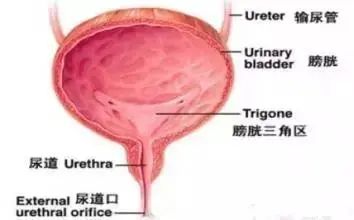
12
Bladder
Reflex area: On both sides of the philtrum at the root of the nose
1. If this area is red, with red blood vessels, acne, or sores, it indicates cystitis, which may cause symptoms such as yellow, frequent urination; cystitis may also cause lower back pain;
2. If there are wrinkles in the bladder area, it may indicate kidney atrophy; red acne indicates inflammation, and later black moles may indicate pathological changes.
13
Reproductive System
Reflex area: Around the philtrum and lips
1. If a woman has moles or birthmarks below her lips, and the kidney reflex area is smooth, it indicates a retroverted uterus and lower back pain;
2. If a woman has moles or birthmarks around her lips, and the kidney reflex area is also poor; or if a woman’s lips are bluish, dark, or pale, and the kidney reflex area is also poor, these two situations usually indicate coldness in the body;
3. If a woman has bumps in the philtrum, it usually indicates uterine disease;
4. If a man has moles or birthmarks around his lips, and the kidney reflex area is also poor, it indicates reproductive system issues;
5. If a man’s upper lip is uneven, with grooves and vertical lines, it indicates male sexual dysfunction.
14
Chest and Breasts
Reflex area: At the slope of the bridge of the nose between the two eyes
Spots and blemishes in the breast area may indicate breast hyperplasia and tumors.
Source: Traditional Chinese Medicine Thought.
2. 19 Experiences of Holographic Pulse Diagnosis:
1. The head corresponds to the distal end of the cun pulse. The neck projects to the middle of the cun pulse. 2. The thoracic cavity and organs project to the entire cun pulse. 3. The liver, gallbladder, spleen, stomach, and pancreas project to the distal end of the guan pulse. 4. The kidneys and adrenal glands correspond to the proximal end of the guan pulse. The pelvic organs correspond to the chi pulse. 5. The skin, muscles, etc., project to the edge of the pulse. 6. The radial edge corresponds to the soft tissues and referred pain of the body’s side and back; the ulnar edge corresponds to the pulse energy of the abdominal front tissues, which can sense the organs near the midline. 7. If the pulse at the chi position is weak, the limbs are cold, and intestinal function is poor. Menstrual, reproductive, and sexual functions are poor. If the guan and chi pulses are strong, the sexual function is strong; any weakening indicates poor function. 8. Referred pain from internal organs often reflects on the body surface and appears in the form of edge pulses. 9. The shape of internal organs is round, and the pulse energy at the cun pulse is a point (pulse halo point); the shape of internal organs and muscles is cord-like, and the shape of the cun pulse halo is linear. In the early stage of organ inflammation (hyperemia phase), the pulse halo is floating. 10. The pulse position of solid organs is often deep, and when diseased, their pulse strength is often strong. The pulse position of hollow organs is often floating and weak. 11. When the pulse position is deep, weak, or absent, it often indicates weakened organ function, reduced volume, or surgical removal. 12. In the early stage of nerve compression, the pulse strength may increase; in the later stage of compression, the corresponding organ’s pulse energy will weaken, which is related to nerve function damage (e.g., lumbar disc herniation). The pulse signs of aseptic inflammation in the lumbar muscles, fascia, and nerves present as pulse shapes with added edges and are in a floating position, while the pulse sensation of the spine is also an edge pulse but in a deep position. 13. In normal individuals, the left chi pulse is always weaker than the right chi pulse. 14. The left cun corresponds to the heart and throat; the right cun corresponds to the lungs and trachea; the middle cun corresponds to the tonsils, thyroid, and lymph nodes; the spleen and stomach are on the left, and the liver and gallbladder are on the right; the right guan chi pulse has the widest sensing range, with menstruation sensed at the right guan chi pulse, the rectal pulse position at the lower end of the chi pulse, the reproductive pulse position at the right chi end, and the urinary and prostate pulse positions at the lower ends of both chi pulses, with both upper and lower limbs overlapping at the radial edge of the chi pulse, and the cervical spine and occipital area at the radial edges of both cun pulses. 15. A strong single left guan pulse often indicates spleen enlargement or cervical lymphadenopathy. 16. A strong left guan pulse accompanied by disease pulse points in both chi pulses, with a rapid and surging pulse, suggests mesenteric lymphadenitis. 17. The pulse sign of diabetes is characterized by an arterial pulse plus the left chi pulse showing pulse halo points; based on the strength and size of the left chi pulse halo points, one can generally infer the blood sugar levels and the effectiveness of medication. The pulse sign of gout is similar to that of diabetes; based on the size of the left guan pulse halo points, one can generally judge the uric acid levels and the effectiveness of medication. 18. A turbid pulse and a deep right guan pulse indicate fatty liver. A string-like pulse with deep strength in both guan pulses indicates cirrhosis and liver-spleen enlargement. 19. A strong and solid guan chi pulse indicates ipsilateral lumbar disc herniation; edge pulses in both cun pulses indicate cervical spondylosis; a single edge pulse in the cun indicates ipsilateral shoulder periarthritis.
3. Holographic Map
|
|
Appendix: Holographic Gua Sha Therapy:
Scraping the Thumb – For cough, chest tightness, and sore throat
Scraping the Thumb – The thumb corresponds to the lung meridian, which governs qi and respiration. If the lungs are not functioning well, symptoms such as cough, chest tightness, shortness of breath, and sore throat may occur. Therefore,when experiencing cough or chest tightness, scrape the outer side of the thumb and pull outward.
Scraping the Index Finger – For constipation, diarrhea, and indigestion
Scraping the Index Finger – The index finger corresponds to the large intestine meridian, which corresponds to the large intestine and stomach. Therefore,people who often experience constipation, diarrhea, or indigestion should scrape the index finger.
Scraping the Middle Finger – For palpitations, chest pain, and insomnia
Scraping the Middle Finger – The middle finger corresponds to the pericardium meridian. If there are issues with the heart, symptoms such as palpitations and chest pain may occur, so scraping the middle finger can help.
Additionally, since the heart governs the mind, people with poor sleep may also have issues with the pericardium meridian, and this action can be performed regularly.
Scraping the Ring Finger – For migraines and neck and shoulder pain
Scraping the Ring Finger – The ring finger corresponds to the San Jiao meridian, so people who frequently experience migraines or neck and shoulder pain indicate poor qi and blood circulation, and scraping the ring finger can help.
Scraping the Little Finger – For weakness and susceptibility to colds
The little finger corresponds to the small intestine meridian. If the small intestine meridian is not smooth, it will affect nutrient absorption, leading to malnutrition over time, with mild cases resulting in hair loss and severe cases leading to weakness, low immunity, and susceptibility to colds.
Therefore, regularly smoothing the small intestine meridian can help with nutrient absorption, making the food consumed more effectively utilized, enhancing immunity, nourishing hair, and strengthening the body.
Patting the Back of the Hand – For lower back pain and lumbar disc herniation
The Holographic Hand Therapy technique believes that the hand contains reflex zones for various internal organs. For example, the back of the hand corresponds to the lumbar region, sopeople who often experience lower back pain should frequently pat the back of their hands.
The specific method is:one hand pats the back of the other hand, alternating, with each hand patting 50-100 times.This can help smooth the meridians and qi and blood in the lumbar region, achieving therapeutic effects.
Patting the Palm – For regulating the five internal organs
There are many acupoints on the palm, and many meridians and reflex zones for the five internal organs are also present on the palm. Therefore, to maintain good health, one should frequently pat the palms.It doesn’t matter if you are unfamiliar with the corresponding effects of the acupoints; justpat your hands 100 times daily to help you comprehensively smooth the meridians, promote blood circulation, and strengthen the five internal organs, enhancing overall health.
Through years of clinical practice in bone-setting and acupuncture, Huang Yaoshi believes that the hands are not only tools for humans to transform nature but also reflect the health status of our five internal organs. The shape, color, temperature, and palm lines of our hands convey information about our health. In other words, a single palm can reveal changes in our skin, muscles, bones, qi and blood, and internal organs, allowing us to assess the condition, cause, and severity of diseases. A large amount of research data indicates that most diseases in the human body will manifest on the hands, making them a barometer of our health.
Review of Exciting Articles
Qualitative, locational, quantitative, and situational pulse diagnosis
Three major sections: The most comprehensive guide to mastering TCM inquiry
The principles and methods of navel diagnosis (including treatment methods for abdominal symptoms in the Treatise on Cold Damage)
Correspondence of pulse signs and formulas: Rare symptoms and pulse diagnosis explained together
“Ten Questions in Inquiry Song,” do you understand its deeper meaning?
Interesting: Diagnosing diseases by observing the navel
Expert transmission: The most practical techniques in differential diagnosis
Secret methods of eye observation: Daoist eye diagnosis
The story of Grandma TCM -371- Dr. Li Ke – Difficult and serious diseases primarily diagnosed through abdominal examination
Heavy taste: Diagnostic methods based on excretions (series of unique diagnostic methods)
Seven touches of hand diagnosis: Touching, feeling, pressing, soft, hard, hot, cold
Ear diagnosis and treatment: Summary of notes from famous TCM ear diagnosis masters
How to become a master of pulse diagnosis? This is how to learn pulse diagnosis.
The dynamic pulse diagnosis chart is here (a must-see for learning pulse diagnosis)
What problems exist in inquiry? What should be asked in inquiry? (Including a summary of inquiry highlights from various dynasties)
One sentence to learn: Tongue coating, tongue quality, and various tongue appearances (self-study TCM tongue diagnosis section)
Learning pulse diagnosis from scratch: Step by step teaching you how to learn pulse diagnosis
Effective methods for treating cold damage + pulse diagnosis methods + floating and sinking pulse methods in cold damage
Modern people often have deep pulse signs without roots, known as the “injured essence pulse,” indicating significant depletion of essence.
The twelve meridians – TCM theories that science has yet to validate | Huang Chengyi
Twenty-six common pulse signs and their identification methods
A comprehensive self-study of TCM: Detailed inquiry + detailed observation (extremely detailed)
Pulse diagnosis principles: Ten major conditions reflected in the pulse (essential for pulse diagnosis)
Practical: Summary of TCM diagnostic formulas from famous doctors throughout history
Here comes the practical: Presenting 61 high-definition tongue diagnosis charts (shortcut to tongue diagnosis)
A unique observation method: Observing the sclera of the eyes to know where the disease is located
Complete collection of blue vein diagnosis methods
Inquiry based on formulas: How to conduct effective and practical inquiry based on formulas?
Publicly available information on 60 reputable TCM practitioners in Chengdu, Sichuan: “Six Little Children,” Feng Daka, Huang Yizhen, Chen Fuzhi, Lu Huoshen, etc. – each possessing unique skills (good TCM practitioners)
100 diagnostic experiences, medication experiences, and formula experiences from old TCM practitioners
60 effective acupoint treatment secrets: By touching the painful points, you can know what disease it is, and by finding the acupoints, you can solve the pain yourself.
[Spinal Diagnosis Collection] 108 types of internal organ diseases originating from “spinal misalignment” with corresponding illustrations
One must be a TCM practitioner skilled in inquiry.
TCM pulse diagnosis is so magical, truly incredible.
Self-learning pulse diagnosis (pulse diagnosis), start by distinguishing strength and weakness, then from speed and slowness to distinguish cold and heat.
Wang Xingfu’s medical discourse – Discussing the application of tongue and pulse signs in differential diagnosis.
The significance of pulse diagnosis – Qualitative, locational, quantitative, and situational.
Without pulse diagnosis and inquiry, how does Mr. Dong Jingchang diagnose? (Dong’s unique acupoints)
Dividing meridians and pulse methods – Restoring the comprehensive examination methods of the Huangdi Neijing.
Practical methods for treating cold damage: How to effectively improve diagnostic accuracy?
Xu Yueyuan: The unity of pulse and person.
Why can pulse diagnosis reveal diseases?
What does sweating tell you? Inquiry in TCM regarding “sweating”.
What does pain tell you? Inquiry in TCM regarding “pain”.
This article is: Shortcuts to the four examinations in TCM.
Inquiry thinking section: In-depth explanation of TCM thinking around inquiry.
Insights from following Dr. Liu Duzhou.
Master of TCM Zhou Zhongying: Insights and techniques from 60 years of TCM diagnosis.
Blue vein diagnosis: Illustrated diagnosis of common blue veins in the human body.
TCM physical examination treasure: Clinical revelations of sha diagnosis and sha signs.
Gua Sha techniques collected from various sources: Insights from “Ming Yi Pulse Diagnosis”.
Helping you summarize: A complete list of abdominal diagnosis methods for cold damage (illustrated explanation version).
Log of pulse diagnosis from folk experts, with significant practical reference value.
Many folk experts: Observing tongue diagnosis from the perspective of qi dynamics (the true tongue diagnosis).
Daily insights from following a master – 45 – Dream diagnosis.
Ni Haixia’s ten methods of TCM inquiry explained in detail.
The soul and mystery of TCM diagnosis | Meng Jingchun.
Ear observation diagnosis.
Essentials of hand diagnosis illustrated in “Unique Hand Diagnosis”.
Zhu’s unique ear diagnosis.
The most comprehensive: Diagnostic songs (collection).
Inquiry! How many truly master inquiry?
Essence of organ observation diagnosis, learn it and you can get started.
Complete collection of abdominal diagnosis (three major experts, three major sections).
Niuwen: Diagnosing and treating diseases with ten fingers.
To simplify self-learning TCM series one: Disease mechanism diagnosis.
Strange discussions on diagnosis: Foot diagnosis methods.
Strange discussions on diagnosis: Leg diagnosis methods.
“Children are mute, observation diagnosis is key” (Essence of pediatric observation diagnosis).
This is the true “ancient TCM tongue diagnosis” (preserve for in-depth reading).
Four examination methods in gynecology, complete explanation of gynecological differential diagnosis.
Excellent foundation in TCM observation diagnosis.
These 22 hand diagnosis charts are considered “perfect diagnostic charts”.
Special diagnostic methods: Detailed explanation of sweating diagnosis.
Comprehensive TCM inquiry on cold and heat | Zhu Wenfeng.
TCM teaches you pulse diagnosis (collection).
TCM experts share their learning experiences in pulse diagnosis…
Pulse diagnosis gifts: Four-word true formulas of TCM pulse methods (including twelve simple pulse diagnosis methods).
Observation and understanding are divine (internal lecture notes from Lingnan TCM Academy) [Observation Diagnosis].
Beginners in TCM: The easiest to understand and master six fu organs detailed explanation (including the true meaning of beginner pulse diagnosis).
Real insights from master-apprentice follow-up experiences, a glimpse into Ni Haixia’s TCM theory | Fang Liang.
How to accurately diagnose internal organ diseases through “tender points”?
Ni Haixia: TCM’s four examinations “Observation, Listening, Inquiry, and Pulse Diagnosis”.
Ni Haixia: Discussing yin deficiency and yin excess, cancer (liver cancer) treatment principles, and TCM’s four examinations.
Pediatrics using “four examinations,” methods are very important.
Diagnosed as “late-stage lung cancer” in the hospital, spending thousands without effect, TCM cures stubborn diseases with just a few dozen yuan of herbal medicine.
Eye diagnosis – Looking at your eyes to know your disease.
Secret transmission of TCM diagnosis: Navel diagnosis.
Understanding pain: The four examinations of TCM combined – discussing diseases that instruments cannot detect.
Dr. Luo Yuankai has accumulated decades of experience in gynecological observation diagnosis.
Reading a person’s psychology through their eyes (psychological observation diagnosis) [Essence].
So this is how old TCM practitioners diagnose (Observation Diagnosis).
Basic knowledge of TCM observation diagnosis, essential for clinics!
Facial observation diagnosis and the five elements [Video teaching].
TCM observation diagnosis (easy to understand, easy to learn).
Super practical TCM observation diagnosis illustrated, easy to understand!
In the story of Bian Que and Duke Cai Huan, the doctor-patient relationship capsized due to the miraculous observation diagnosis?
Comprehensive guide to holographic observation diagnosis (recommended for collection).
Essence of TCM observation diagnosis illustrated, easy to understand! You can also be a doctor!
Comprehensive guide to TCM tongue diagnosis.
Complete illustrated explanation of TCM tongue diagnosis.
The most comprehensive tongue diagnosis chart is here! Look at the tongue to know the whole body!
[Video] Complete tongue diagnosis chart! Just look at the tongue to know which disease it is!
TCM observation diagnosis of tongue diagnosis.
Complete tongue diagnosis.
The most comprehensive charts for facial diagnosis, eye diagnosis, nose diagnosis, ear diagnosis, lip diagnosis, tongue diagnosis, and teeth diagnosis… collected!
Practical hand diagnosis.
There is a hand diagnosis method that immediately reveals the disease!
24 hand diagnosis charts, comparable to X-rays, revealing your physical and mental health.
Introduction to hand diagnosis: Understanding the importance of hand diagnosis.
Hand diagnosis mnemonic: Health status is right in your hands! (Video, learn it in a day).
Practical hand diagnosis collection.
Old TCM practitioners teach you hand diagnosis to see through facial features, eye features, mouth features…
Hand diagnosis… facial features… eye features… mouth features.
Hand diagnosis… facial features… eye features… mouth features. The secret is like this.
The mystery of TCM diagnosis – The listening diagnosis of observation, inquiry, and pulse diagnosis.
Senior TCM practitioners’ comprehensive inquiry guide, revealing!
Is TCM diagnosis really that simple? (Including inquiry forms).
TCM practitioners skilled in inquiry are superhumans with multiple roles!
Ni Haixia: Inquiry in formula-based TCM is very important | Detailed explanation of ten inquiry methods.
Ni Haixia: Diseases are diagnosed through inquiry | Detailed explanation of ten inquiry methods.
How do old TCM practitioners take pulses?
The thinking process of pulse diagnosis in TCM – Teaching you how to take pulses.
What is the experience of taking pulses? Teacher Danfu tells you about pulse-taking insights.
My pulse diagnosis experience: Ten symptoms that explain the pulse method for cold damage (recommended reading).
Ten common symptoms of pulse diagnosis based on formulas.
[Zou Mengcheng] Learning to observe pulses and experiences in pulse diagnosis.
Basic pulse diagnosis (including distinguishing similar pulses, seven unique pulses).
Pulse diagnosis for pregnancy to determine gender is a skill that can be mastered.
Pulse diagnosis techniques.
TCM’s unique skills: The secret pulse diagnosis that can predict diseases!
Senior TCM practitioners humorously discuss pulse diagnosis – Teaching you to quickly master pulse diagnosis!
Basic pulse diagnosis, learn to take pulses in ten minutes!
Introduction to TCM pulse diagnosis | Understand the pulse theory in ten minutes!
He lost his sight at 9, and after 40 years of feeling hundreds of thousands of pulses, he explained the science of pulse diagnosis using mathematics and fluid mechanics.
Seeking roots: The original meaning of the three yin and three yang (including the six meridian differential diagnosis treatment methods).
Concise and insightful formula sections: Five major summaries of cold damage clinical treatment (including the essence of differential diagnosis).
Eight methods for treating Yangming disease + eight methods for diagnosing Yangming organ excess (why emphasize Yangming?).
For those who understand: Using six meridian differential diagnosis to explain various other differential diagnoses (very useful).
Mr. Shen Baofan’s clinical medication experience, differential diagnosis and medication selection, integration of Chinese and Western medicine, dosage issues.
Collecting and listing – Market available formulas and patent medicines (including six meridian differential diagnosis outlines and application).
Key points of formulas: Key points of differential diagnosis for hundreds of formulas in cold damage (including key points for medication in cold damage).
Core of Zheng Qin’an: Recognizing disease shortcuts, yin-yang differential diagnosis, and the golden needle for medication.
No matter what bacteria or virus, just follow the six meridian differential diagnosis (symptoms of six meridians listed).
For those with tinnitus or deafness, this article is for you, covering all types of TCM differential diagnosis treatments.
Famous doctors’ experiences – TCM differential diagnosis and treatment of influenza, with a cure rate of 100%.
TCM differential diagnosis for obsessive-compulsive disorder.
Key points for TCM differential diagnosis identification.
TCM differential diagnosis and treatment for big bone joint disease, etiology, pathogenesis, and herbal formulas.
Discussing hypertension as an example of TCM differential diagnosis and treatment | Dr. Li Zong’en.
“Neijing” differential diagnosis: 18 types of comprehensive differential diagnosis methods displayed (including rapid differential diagnosis and treatment methods).
Unspoken secrets: Accurate matching of differential diagnosis and formulas, incorrect dosages will also lead to ineffectiveness; heavy dosages are needed to treat chronic diseases.
Six meridian differential diagnosis: Condensed and refined methods of cold damage six meridian differential diagnosis (including ten major formulas for cold damage).
Alternative differential diagnosis: This article teaches both foundational knowledge and differential diagnosis.
How to use formulas to treat insomnia? Ten formulas for differential diagnosis of insomnia.
Learning day and night differential diagnosis methods can reveal the severity of diseases, detailing 39 types of diseases’ day and night differential diagnosis methods.
“TCM Differential Diagnosis Formula,” with this table, you can easily understand it.
Observing the tongue and fingers, differential diagnosis for health preservation, holding onto health, eliminating all diseases.
A TCM practitioner who cannot perform differential diagnosis is certainly not a good TCM practitioner.
Six meridian differential diagnosis: The simplest method of pulse and symptom correlation.
TCM treatment for shingles differential diagnosis thinking and methods.
Discussing differential diagnosis and treatment of “Gu Yuan Gao” and “Misguided Supplementation Causing Disease”.
Essence of organ differential diagnosis: Summarizing key points of organ disease symptoms.
Professor Zhang Shicheng: Differential diagnosis and treatment is the soul of TCM, and the preparation of herbal pieces is fundamental to Chinese medicine!
Impressive! Check out the differential diagnosis insights summarized by others.
A set of differential diagnosis methods for beginners that are easy to understand and master.
A set of differential diagnosis methods for beginners that are easy to understand and master.
One glance to identify diseases: 81 methods of quick differential diagnosis.
Three Yang of Cold Damage: 64 questions on heat disease (differential diagnosis thinking for three Yang heat symptoms).
The most comprehensive online resource: Eight principles, six meridians, three jiaos, and other differential diagnosis methods.
Systematic and organized learning: Tabular format for organ differential diagnosis.
In one sentence, teach you “Menstrual Differential Diagnosis” (gynecological expert).
What exactly is differential diagnosis? Have you figured it out?
Hao Wanshan: Using formulas to treat schizophrenia, focusing on differential diagnosis of Yangming.
Detailed observation of symptoms, missing no detail – Famous doctors’ meticulous differential diagnosis.
Liuchengbin: Differential diagnosis and medication for the five internal organs.
Blue vein diagnosis: Illustrated diagnosis of common blue veins in the human body.
New version: Reorganizing the Treatise on Cold Damage (differential diagnosis text version).
Song of organ differential diagnosis + 150 must-memorize formulas (even if you don’t want to memorize, keep it well).
TCM from Taiwan: List of four commonly used differential diagnosis methods.
Shortcuts to differential diagnosis: Providing you with five quick differential diagnosis tables.
The most systematic explanation: Eight principles of differential diagnosis.
Ancient medical secrets: Shortcuts to differential diagnosis (including six meridian shortcuts and miscellaneous disease shortcuts).
Cold damage gifts: Direct explanation of cold damage differential diagnosis.
This article covers tongue signs – differential diagnosis – medication (all three included).
Learning differential diagnosis: One disease can be effectively treated with four differential diagnosis methods.
Differential diagnosis and medication for various diseases – The advantages of academic TCM: Systematic, comprehensive, and standardized.
Cold damage: Key points of differential diagnosis in the Treatise on Cold Damage (summary).
Methods for differential diagnosis of appetite in the Treatise on Cold Damage.
Systematic and standardized “Five Internal Organs Differential Diagnosis”.
Essence of differential diagnosis: Cold damage “Urination” discussion.
Revealing the secret methods of differential diagnosis from famous TCM practitioners in the Republic of China.
Condensed version of six meridian differential diagnosis (in-depth reading).
Four examination methods in gynecology, complete explanation of gynecological differential diagnosis.
Excellent foundation in TCM observation diagnosis.
These 22 hand diagnosis charts are considered “perfect diagnostic charts”.
Special diagnostic methods: Detailed explanation of sweating diagnosis.
Comprehensive TCM inquiry on cold and heat | Zhu Wenfeng.
TCM teaches you pulse diagnosis (collection).
TCM experts share their learning experiences in pulse diagnosis…
Pulse diagnosis gifts: Four-word true formulas of TCM pulse methods (including twelve simple pulse diagnosis methods).
Observation and understanding are divine (internal lecture notes from Lingnan TCM Academy) [Observation Diagnosis].
Beginners in TCM: The easiest to understand and master six fu organs detailed explanation (including the true meaning of beginner pulse diagnosis).
Real insights from master-apprentice follow-up experiences, a glimpse into Ni Haixia’s TCM theory | Fang Liang.
How to accurately diagnose internal organ diseases through “tender points”?
Ni Haixia: TCM’s four examinations “Observation, Listening, Inquiry, and Pulse Diagnosis”.
Ni Haixia: Discussing yin deficiency and yin excess, cancer (liver cancer) treatment principles, and TCM’s four examinations.
Pediatrics using “four examinations,” methods are very important.
Diagnosed as “late-stage lung cancer” in the hospital, spending thousands without effect, TCM cures stubborn diseases with just a few dozen yuan of herbal medicine.
Eye diagnosis – Looking at your eyes to know your disease.
Secret transmission of TCM diagnosis: Navel diagnosis.
Understanding pain: The four examinations of TCM combined – discussing diseases that instruments cannot detect.
Dr. Luo Yuankai has accumulated decades of experience in gynecological observation diagnosis.
Reading a person’s psychology through their eyes (psychological observation diagnosis) [Essence].
So this is how old TCM practitioners diagnose (Observation Diagnosis).
Basic knowledge of TCM observation diagnosis, essential for clinics!
Facial observation diagnosis and the five elements [Video teaching].
TCM observation diagnosis (easy to understand, easy to learn).
Super practical TCM observation diagnosis illustrated, easy to understand!
In the story of Bian Que and Duke Cai Huan, the doctor-patient relationship capsized due to the miraculous observation diagnosis?
Comprehensive guide to holographic observation diagnosis (recommended for collection).
Essence of TCM observation diagnosis illustrated, easy to understand! You can also be a doctor!
Comprehensive guide to TCM tongue diagnosis.
Complete illustrated explanation of TCM tongue diagnosis.
The most comprehensive tongue diagnosis chart is here! Look at the tongue to know the whole body!
[Video] Complete tongue diagnosis chart! Just look at the tongue to know which disease it is!
TCM observation diagnosis of tongue diagnosis.
Complete tongue diagnosis.
The most comprehensive charts for facial diagnosis, eye diagnosis, nose diagnosis, ear diagnosis, lip diagnosis, tongue diagnosis, and teeth diagnosis… collected!
Practical hand diagnosis.
There is a hand diagnosis method that immediately reveals the disease!
24 hand diagnosis charts, comparable to X-rays, revealing your physical and mental health.
Introduction to hand diagnosis: Understanding the importance of hand diagnosis.
Hand diagnosis mnemonic: Health status is right in your hands! (Video, learn it in a day).
Practical hand diagnosis collection.
Old TCM practitioners teach you hand diagnosis to see through facial features, eye features, mouth features…
Hand diagnosis… facial features… eye features… mouth features.
Hand diagnosis… facial features… eye features… mouth features. The secret is like this.
The mystery of TCM diagnosis – The listening diagnosis of observation, inquiry, and pulse diagnosis.
Senior TCM practitioners’ comprehensive inquiry guide, revealing!
Is TCM diagnosis really that simple? (Including inquiry forms).
TCM practitioners skilled in inquiry are superhumans with multiple roles!
Ni Haixia: Inquiry in formula-based TCM is very important | Detailed explanation of ten inquiry methods.
Ni Haixia: Diseases are diagnosed through inquiry | Detailed explanation of ten inquiry methods.
How do old TCM practitioners take pulses?
The thinking process of pulse diagnosis in TCM – Teaching you how to take pulses.
What is the experience of taking pulses? Teacher Danfu tells you about pulse-taking insights.
My pulse diagnosis experience: Ten symptoms that explain the pulse method for cold damage (recommended reading).
Ten common symptoms of pulse diagnosis based on formulas.
[Zou Mengcheng] Learning to observe pulses and experiences in pulse diagnosis.
Basic pulse diagnosis (including distinguishing similar pulses, seven unique pulses).
Pulse diagnosis for pregnancy to determine gender is a skill that can be mastered.
Pulse diagnosis techniques.
TCM’s unique skills: The secret pulse diagnosis that can predict diseases!
Senior TCM practitioners humorously discuss pulse diagnosis – Teaching you to quickly master pulse diagnosis!
Basic pulse diagnosis, learn to take pulses in ten minutes!
Introduction to TCM pulse diagnosis | Understand the pulse theory in ten minutes!
He lost his sight at 9, and after 40 years of feeling hundreds of thousands of pulses, he explained the science of pulse diagnosis using mathematics and fluid mechanics.

